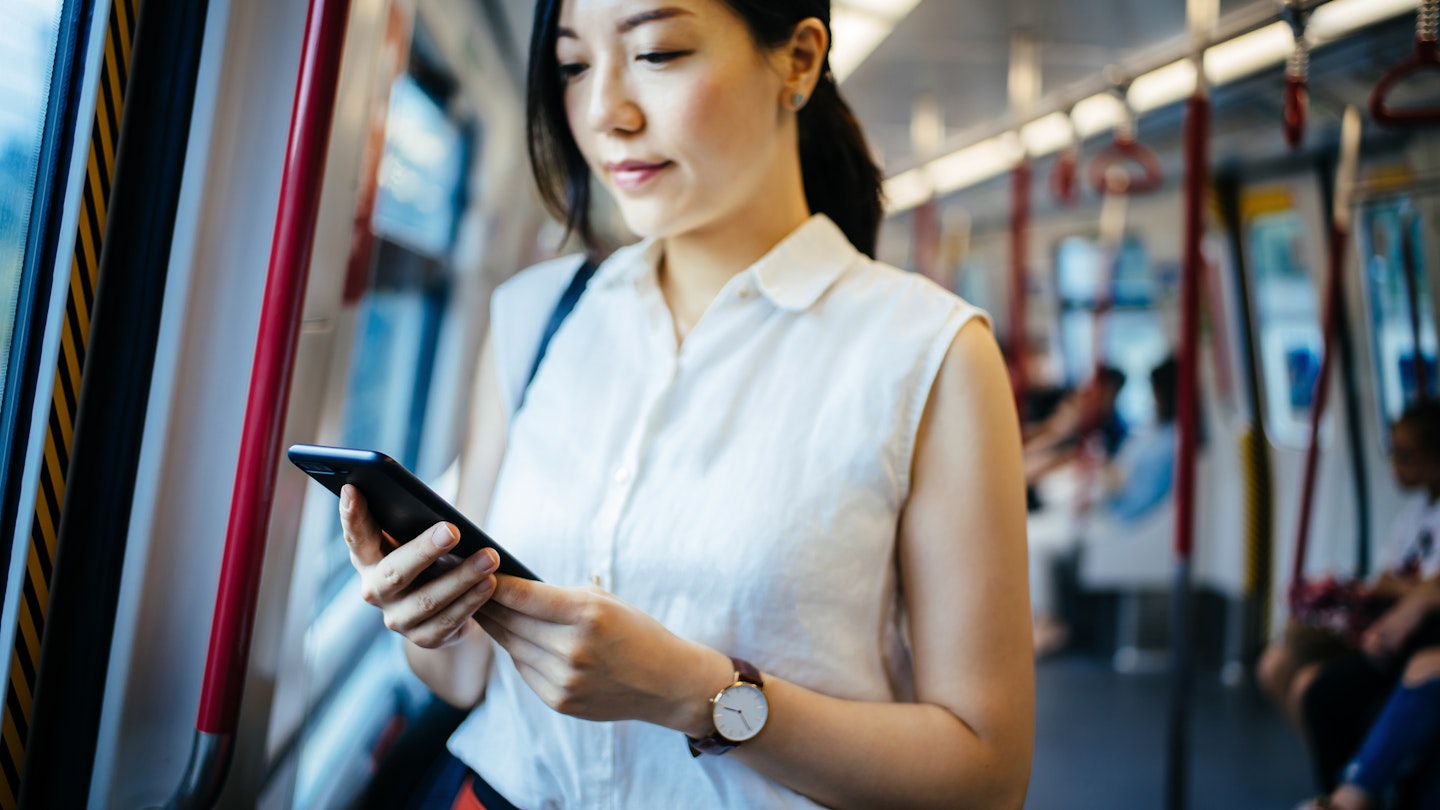High-rise Hong Kong has long been a hive of busy worker bees who depend on the city’s efficient transport system to whisk them from apartment to office to mall to restaurant and back again.
Most people use the MTR, a swish subway and train network with more than 150 stations dispersed across Hong Kong Island, Kowloon, Lantau, and the New Territories. However, given the hilly island topography, there are many more creative ways to get from A to B. For visitors, it can be far more rewarding to slow down, stay above ground, and savor the journey.

Take the Star Ferry between Hong Kong Island and Kowloon (and back again)
Yes, they’re slower than the MTR, but the iconic green and white Star Ferries embody slow travel at its finest. Hop aboard for jaw-dropping skyline views (day or night), a tangible sense of history, and the finest photo op of your trip. Best of all, it costs less than a cup of tea.
Note that there are two Star Ferry routes and two ticket types (upper and lower deck). Upper-deck tickets are slightly more expensive (up to HK$6.50 on weekends) but come with air-conditioning and better views.

Ride the trams in north Hong Kong Island
Resembling slimmed-down London double-deckers, the “ding dings” trundle between the eastern and western districts of Hong Kong Island. They’re a cheap, leisurely, and scenic way to travel between Central and more laidback Kennedy Town, or to the shopping mecca of Causeway Bay in the other direction.
The flat fare is HK$3, using either the exact amount in coins or an Octopus card. Use the turnstiles at the back of the trams to get on and pay at the front when you get off. Try to snag a front seat on the top deck for the best views.
Hong Kong’s most famous tram, the Peak Tram, isn’t really a tram at all but a remarkably steep funicular railway. The route was upgraded in 2022, allowing it to carry twice the passengers – 210 in total – for the 396m (1299ft) vertical ascent to Victoria Peak and Hong Kong’s best view.

Save your legs by riding the world’s longest outdoor people-mover
Connecting the office blocks of Central to more residential zones further up the island, the zig-zagging Central-Mid-Levels Escalator is a commuting lifeline, shifting almost 80,000 people a day for the 800m (2624ft) trip (down to work in the morning, up from 10am until midnight).
With multiple points to hop on and off, it’s perfect if you’re heading to that hip new Soho bar and don’t want to sweat your way up the exhaustingly steep and humid streets. It’s also handy for visiting Tai Kwun, Hong Kong’s former Central Police Station turned heritage arts complex.
Flag down a taxi (but watch for the colors)
Taxis are more affordable than you might think for a city like Hong Kong, featuring spacious and comfy retro-styled Toyota cars. However, the taxis are color-coded, with red taxis being the most common yet also the most expensive type. They charge HK$27 for the first 2km (1.2 miles) and HK$1.90 for every 200m (656ft) and minute of waiting time thereafter. Green taxis serve the New Territories, while the light blue taxis are for Lantau.
While officially ride-hailing services like Uber are considered illegal for drivers without a hire-car permit, drivers still operate the app. Users can hail licensed taxis and conveniently pay through the app, a handy feature if you find yourself cashless.
Make sure to get an Octopus card
The rechargeable travel smartcard saves you money on trips, but most importantly, it saves time – no digging for exact change or queuing up at ticket machines. The Octopus card costs HK$150, which includes a HK$50 refundable deposit and HK$100 worth of travel credit.
This card can be used on most forms of transport, including taxis and the Peak Tram. Additionally, you can even use it to gain entry to the Happy Valley racetrack. You can also download the Octopus app using either Samsung Pay or Apple Pay and travel with your smartphone or watch instead.
Take a ferry to the outlying islands
Ferries to the Outlying Islands depart from the Central Piers. They are reasonably priced, air-conditioned, and quite a few have a bar serving snacks and cold drinks. Tickets can be purchased on the day from kiosks at each pier entrance. Keep in mind that ferries can get very crowded on Saturday afternoons and all day Sunday, especially during warmer months.
Don’t forget the MTR
Clean, fast, safe, and transporting around four million people daily, Hong Kong’s MTR operates from 6am to between midnight and 1am. Tickets are quite cheap, ranging from HK$5 to HK$30, although fares to stations bordering mainland China (Lo Wu and Lok Ma Chau) can cost up to HK$55.
It’s wise to avoid rush hours: 7.30am to 9.30am and 5pm to 7pm on weekdays. For real-time updates, the MTR mobile app is available.
How to get to and from Hong Kong airport
The MTR’s high-speed Airport Express is the most convenient way to travel from Hong Kong International Airport to Kowloon (HK$105 one way) and Hong Kong Island (HK$115 one way). The trains are equipped with Wi-Fi, and passengers flying with electronic travel documents can check in to their flight at the Hong Kong Station.
This article provides essential tips on transportation in Hong Kong, making it easier for visitors to explore the vibrant city efficiently and enjoyably.




